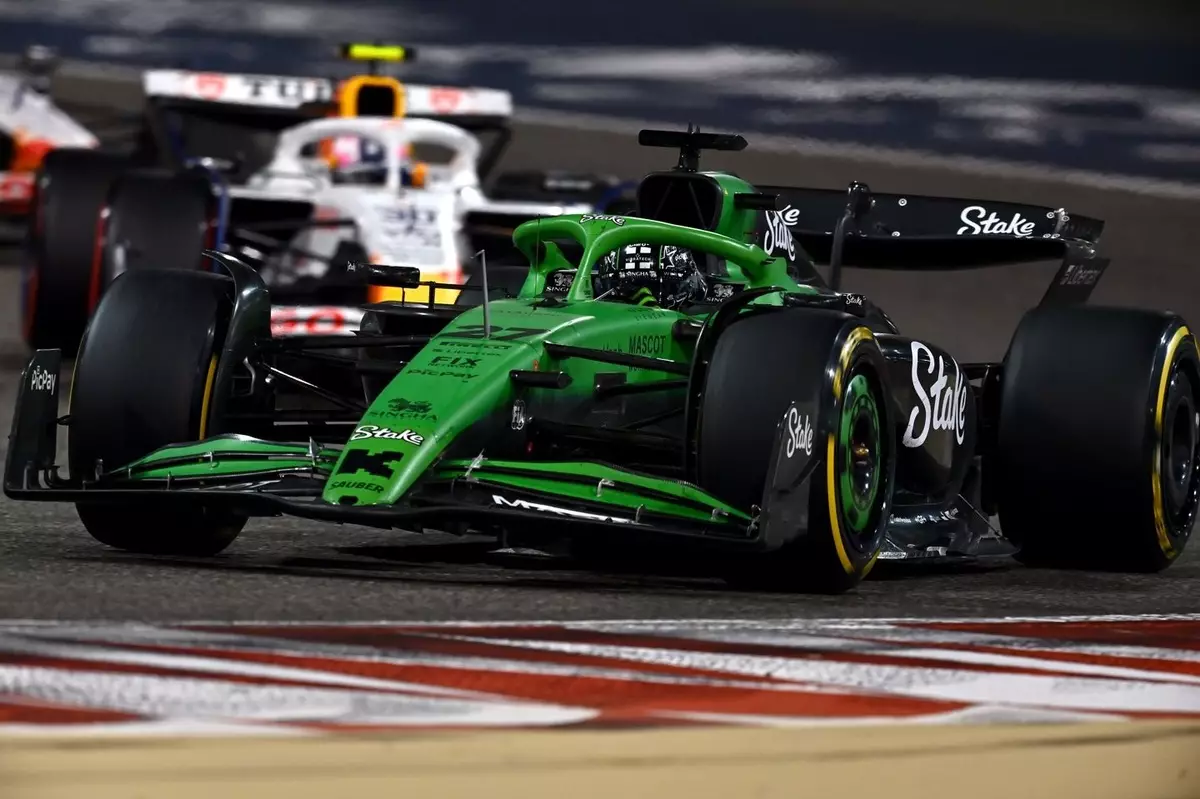The recent disqualification of Nico Hulkenberg following the Bahrain Grand Prix has sent ripples through the Sauber Formula 1 team, underlining the high-pressure stakes involved in the racing world. Hulkenberg managed to cross the finish line in what seemed like a respectable 13th place, but his celebration quickly turned to frustration when his car was disqualified due to a critical infraction related to the vehicle’s skid plank. The issue? The necessary thickness mandated by the regulations was not met, dropping to an unacceptable 8.4mm instead of the minimum 9mm required. This incident is just the latest wake-up call for teams striving for precision in a sport where milliseconds often dictate racing outcomes.
Sauber’s team principal, Beat Zehnder, expressed disbelief over the situation, admitting that the team had fully expected their data measures to keep them within regulatory compliance. Given the turbulent nature of F1 racing, each detail can be the difference between success and failure, and for Sauber, this disqualification feels like an unnecessary setback rather than just a technical failure.
The Aftermath: Understanding the Variables
Compounding the issue is the fact that this incident is not isolated; just weeks earlier, Lewis Hamilton’s Ferrari faced a similar fate for excessive skid wear during the Chinese Grand Prix. Seeing major competitors fall victim to equipment standards raises questions about the level of scrutiny and possible fragility of car design under conditions that can only be described as unforgiving.
Zehnder hinted at potential reasons for this discrepancy, pointing towards the bumpy characteristics of the Bahrain track which might lead to increased wear on various components, including the skid plank. Although conditions can vary greatly from circuit to circuit, he stressed that this is no excuse for the performance slip-up. In motorsport, every millimeter counts, and miscalculation can be as punishing as a race-ending crash. It’s worth noting that Hulkenberg only had limited track time in the final practice session, which may have affected the data gathered and ultimately resulted in the undesirable conditions of his car’s components.
Further Insights: Team Dynamics and Performance Crises
Sauber’s difficulties in Bahrain were exacerbated by their overall season performance thus far. Their only points come from a chaotic race in Australia, and the apparent lack of pace moving forward poses critical questions about the team’s preparations and setups. There’s a stark contrast in the setups employed by Hulkenberg and his teammate Gabriel Bortoleto, with the latter seemingly skirting any disqualification issues despite similar conditions. The disparity in their car setups sheds light on the delicate balance teams must find between performance edge and regulatory compliance.
In the fiercely competitive arena that is Formula 1, qualifying positions carry significant weight. As Zehnder pointed out, being mired in “dirty air” from other cars severely hampers tire performance and overall speed, leading to missed opportunities in races where track dynamics can change rapidly. It’s undeniable that in races where luck and unpredictable weather patterns come into play, teams like Sauber may need to leverage every advantage—be it from qualifying to pit strategies—to claw their way into points-scoring positions.
A Critical Eye on the Road Ahead
Sauber finds itself at a pivotal junction. The team acknowledges that quick adjustments are essential; they need to devise strategies that not only optimize performance but also ensure compliance with stringent regulations. A jump of two or three tenths of a second per lap could significantly alter their fortunes, elevating them beyond the realms of straggling behind mid-pack competitors.
Time is of the essence, and the stakes have never been higher. The contrast between being at the forefront of racing innovation, and being bogged down by the smallest of infractions, exposes the daunting challenge that teams must face. For Sauber, moving forwards means not just fine-tuning their cars, but re-evaluating their entire approach to racing in a sport that demands perfection in every sense. The road ahead will be crucial in determining whether they can climb back into contention or fade into the shadows of missed potential.

